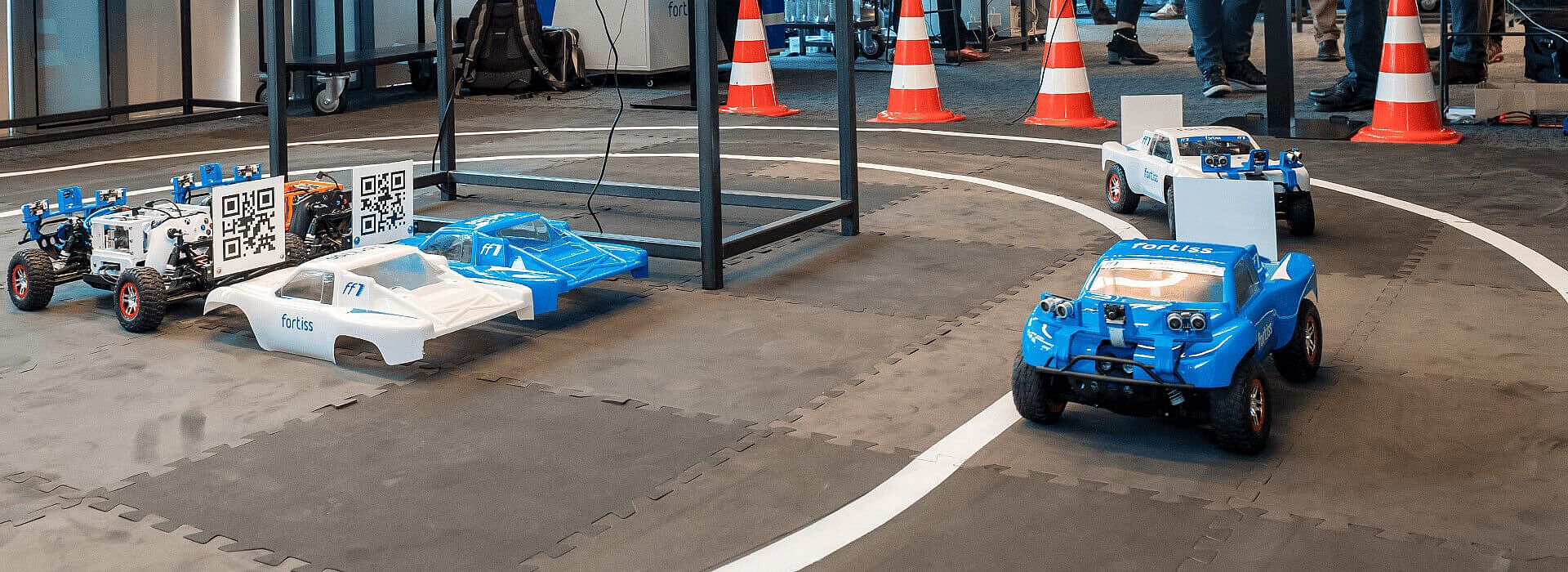
Optimizing the vehicle architectures of tomorrow
Today, innovations in cyberphysical systems such as automobiles or aircraft without complex, software-based functions are unthinkable. Stringent safety and performance requirement make the design of the underlying system architecture difficult and time-consuming.
With the open-source tool AutoFOCUS 3, fortiss is demonstrating how system architecture analysis and optimization can be automated through model-based development in order to efficiently respond to target conflicts and changes.
Today, innovative functions such as driver assistance systems or automated driving functions are realized mainly with software. This poses an enormous challenge since these systems interact with the physical world, have high performance requirements and are continually enhanced.
The demands on the functionality and the selected software and hardware architecture are closely coupled with non-functional characteristics such as cost, weight and energy needs. Because suboptimal architecture decisions can have costly consequences, manual approaches based on empirical knowledge have their limits because of the complexity of the systems.
The AutoFOCUS 3 model-based tool and research platform thus features the capability to automatically explore system architectures, which leads to increased productivity and makes it possible to respond to changing requirements with a high degree of quality.
The AutoFOCUS 3 open-source tool developed by fortiss demonstrates how cyberphysical systems can be developed more efficiently with the help of novel approaches. The foundation of these approaches involves capturing and representing the system in suitable models that constantly offer developer the relevant current information at the respective and correct abstraction level. This includes the logical system components and engineering architecture models that describe the design space that is available for implementing them in concrete software and hardware architectures.
Together with requirements formalized as constraints, these models form the information basis for the automated optimization of system architectures. For this purpose, formal methods are employed through the use of external solvers to, among other things, optimize the representation of software components on the execution platform (deployment). When required, the resources available in the platform can be adapted to the performance requirements of the applications (platform architecture exploration).
The fact that model-based systems engineering and the automation of design tasks can be used to develop systems not only more quickly, but with higher quality, is illustrated for example by collaboration with research partners in the automobile industry.
The automatic design space exploration feature in AutoFOCUS 3 enables valuable contributions to the optimization of future vehicle architectures. By optimizing the utilization of resources such as memory or processing power, it was possible to achieve a higher degree of integration density by taking into account all relevant constraints such as the automotive safety integrity levels (ASIL). Apart from the automation of the processes, this led to cost reductions by saving on electronic control unit or communication buses.
The foundation of this approach was the modeling of the system and empirical knowledge, such as design constraints, eliminating inconsistencies and the automation of process steps such as the extraction of system configurations.
The approaches for system modeling and design space exploration examined in AutoFOCUS 3 have been incorporated into a joint effort between fortiss and Continental AG to look at issues related to the automated exploration of distributed E/E architectures.